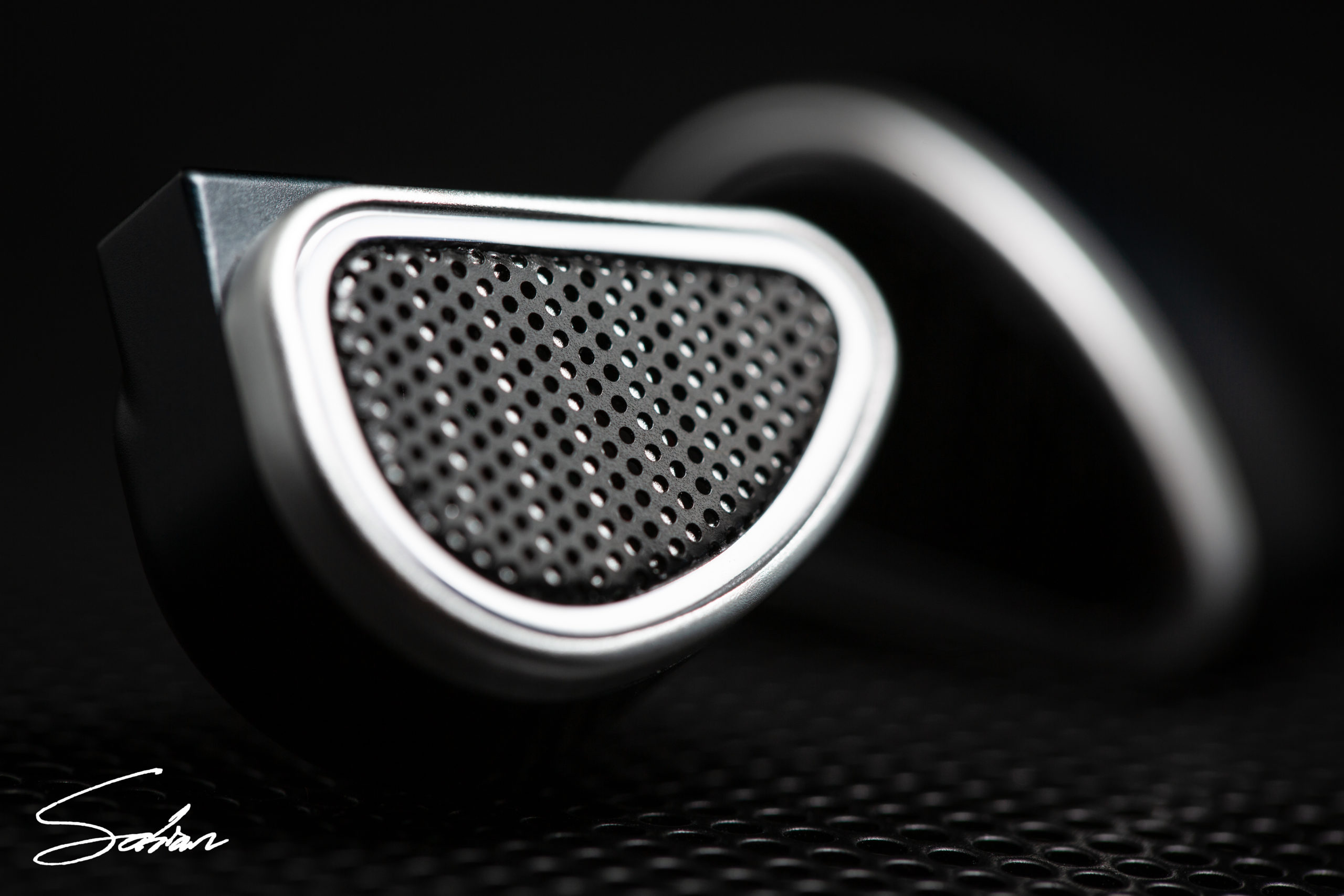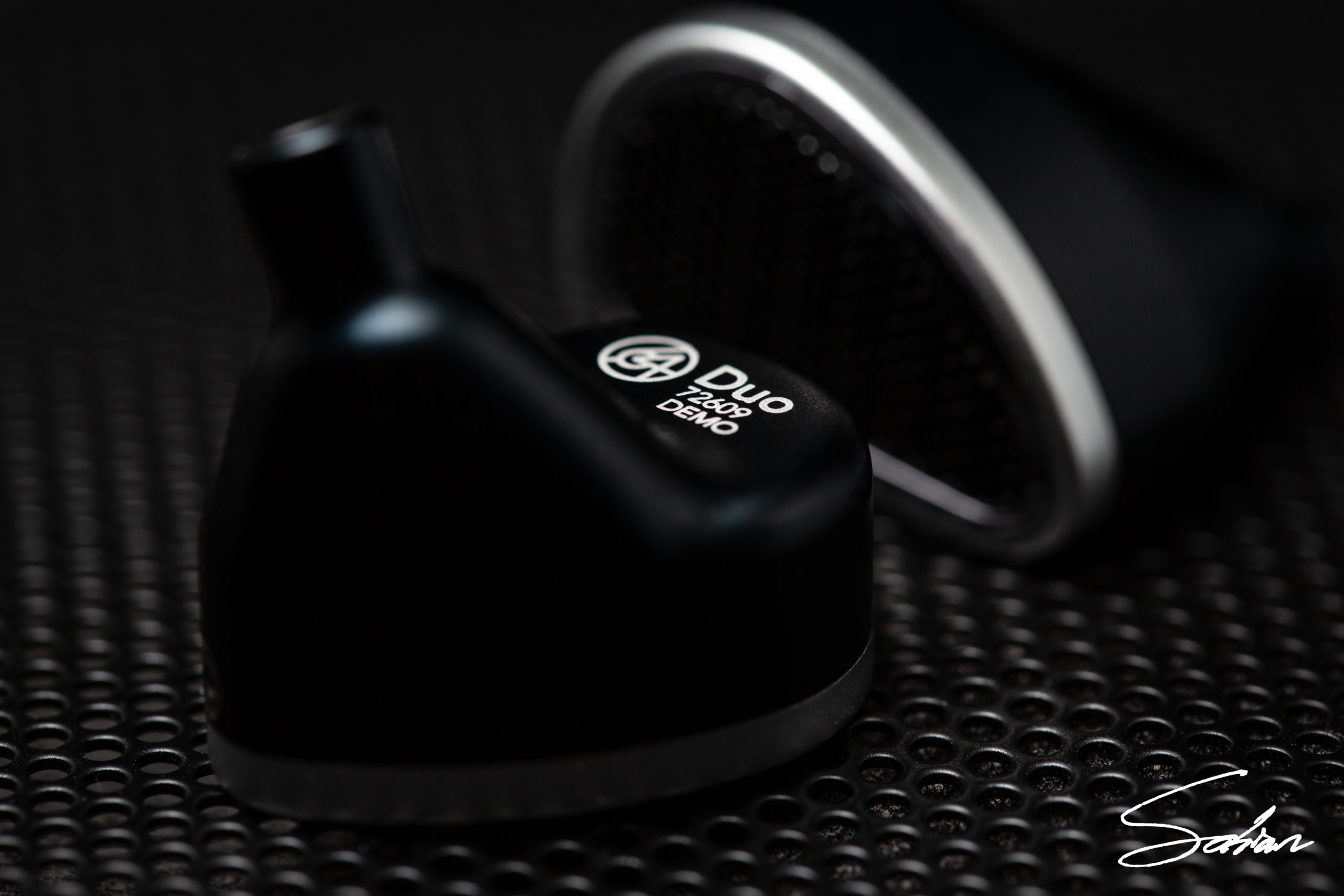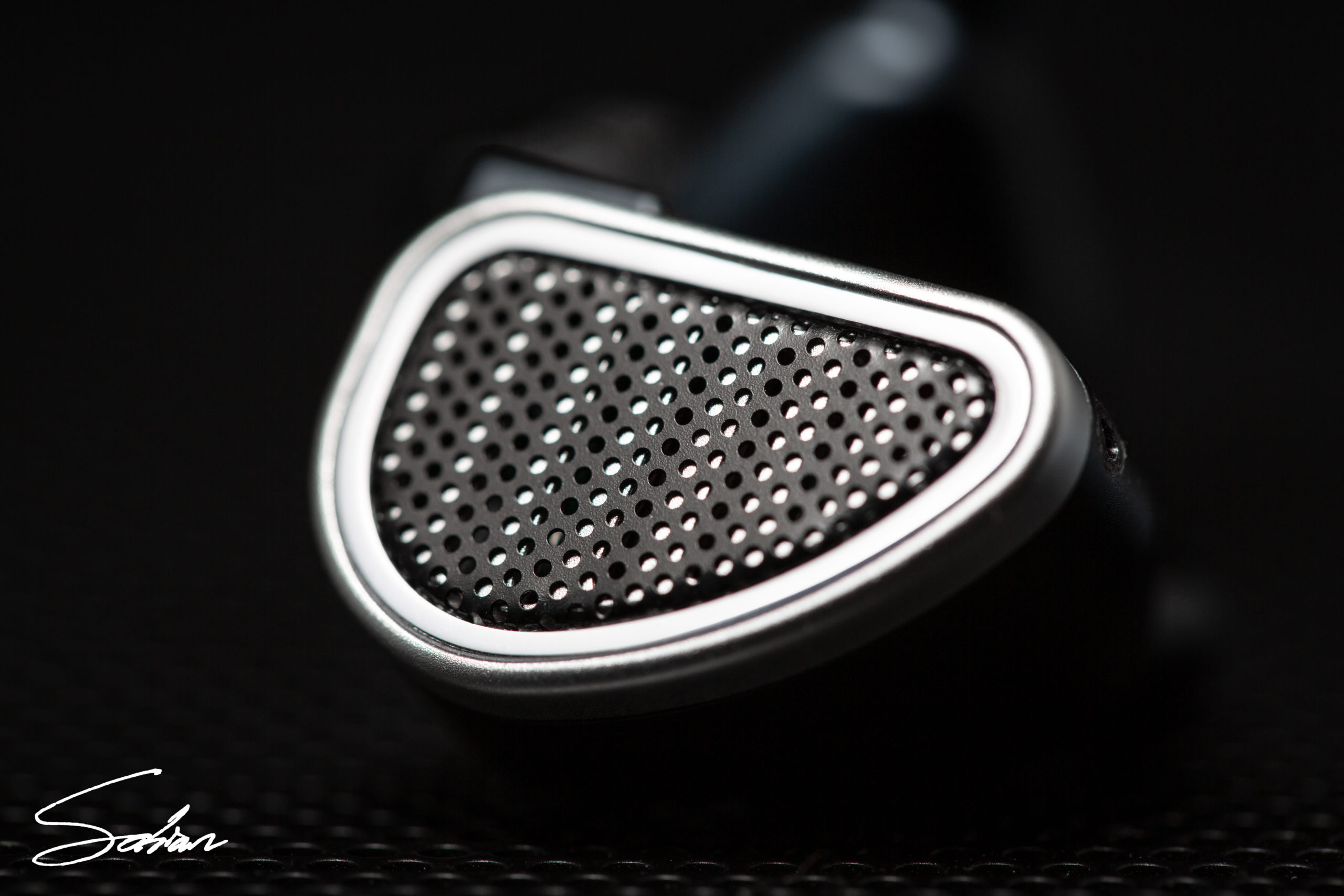Presentation
The 64 Audio Duo is a well-balanced, slightly-warm take on the jack-of-all-trades sound. It’s free of any bold colourations, it doesn’t commit any cardinal sins, and it presents music with a clean, fair and – in a good way – safe tonality. Its timbre is consistently linear from top to bottom; nicely-bodied, well-weighted, yet effortlessly crisp in attack. The former is due undoubtedly to its dynamic driver, which gives the bass and mids a natural swing and decay. Whereas, the latter is down to 64’s signature tia highs; airy, open and detailed, as always. As far as colour’s concerned, the few qualities that do track from one song to the next are the Duo’s thumpy, meaty mid-bass and its neutral high-mids. Otherwise, it’s simply got the tidy, natural, clean tone you’d want out of a daily driver; even-handed, linear, but with crucial hits of bounce and bite too.

Spatially, the Duo’s got really tidy, focused imaging, courtesy of its extended treble. Instruments are positioned precisely with little fuzz or smoke, and its background is superbly defined as well. Each note has a crisp outline to it, so separation is an effortless task; some of the best I’ve heard in its price tier, especially considering its hefty, weighty notes. Thanks to its semi-open design, the Duo also has near-zero occlusion, which is the vacuum-like sensation when you stuff your ears with a fully-sealed IEM. There’s not a wall of pressure gradually caving in the more fatigued you get. It’s an open listening experience, and it gifts instruments lots of breathing room. So, while the Duo’s stage isn’t hyperbolically vast, it maintains its sense of openness much, much more effectively, simply due to how easy it is on the ear. Stereo spread is also fair on the Duo, along with a strong, defined centre-image. And, detail is great across the board; again, a beast at its price level.
Bass
The Duo’s bottom-end is meaty and dense. It has that piston-like pump, courtesy of its dynamic driver. But, it isn’t overtly rich or warm either, per se. It’s not a bass that lingers or blooms. It hits and decays at a slightly quicker pace, which helps that separation and detail I described in Presentation. I find it balances the sub- and mid-bass nicely. So, on an EDM drop, for example, you’ll feel the physical rumble and hear the dark boom in equal measure. Those sorts of genres also benefit from the bass’s good size (or spread, surface-area-wise), which serves as almost a backdrop for the rest of the mix. Then, it doesn’t impose much of its own colour either. It’s punchier and more jab-like on KSI’s Don’t Play, while tracks like Royce da 5’9”’s Godspeed show more rumble or swing. Again, it’s a versatile, characteristically DD bass with a solid, balanced sig.
The only thing I find this bottom-end lacks – compared to the upper echelon of in-ears – is a hint of texture or character. It isn’t a bass that’s particularly evocative or melodic, and this’s most noticeable with genres like jazz. Whether it’s double basses or toms, the Duo just misses out on that last 10% for me; that hint of smokiness or that fibrous texture. Though, it is much less an issue with genres like pop or EDM, where the most crucial elements tend to be slam or drive. It checks all the necessary boxes there, thanks to great extension, which also boosts its resolution. Separating the kick drum and the bass is always done with ease, and it always tapers off before interfering with the rest of the mix too. Ultimately, though not the most attitude-filled of lows, it’ll give more than enough to satisfy its demographic with oomph and thump to boot.
Midrange
The midrange of the Duo balances cleanliness and solidity incredibly well; a 64 Audio specialty. It’s got enough lower-mid content to give baritones their huskiness and violas their weight, but it never exceeds the articulation of its treble, which keeps them sounding tight. This is followed by a classic 1-2kHz rise, so instruments feel dense and tactile. Then, it tapers off into its high-mids, limiting a lot of those brighter, brassy-er overtones, and preventing female vocals and strings from coming off too forward. All in all, it is a curve that favours solidity and neutrality over sheer projection or expressiveness. Fans of opera or jazz may find balladeers a tad held back during belts. Rock fans may find guitar solos less aggressive or roaring as well. But, again, all of this was done in the pursuit of a safe, genre-agnostic tone, which it achieves seamlessly.

When it comes to detail retrieval and layering, the Duo performs very capably. Again, the clean, tidy curve they’ve crafted facilitates a tight, quick attack, along with that natural weight I mentioned above. As mentioned in Presentation, the Duo’s centre-image is particularly solid, which benefits, say, solo performances. That boosts its engagement, and it helps make up for these mids’ one weakness, which I feel is dynamic range. Again, because of the upper-mid dip, there are instances where lead instruments aren’t as vibrant or as emotive. They’ll settle as they go higher up in range, which limits climaxes – like the one on Lianne La Havas’s Bittersweet – from projecting as vividly as they possibly could have. Still, though, aside from that particular niche, this IEM still delivers tiers above the bare minimum for any song. The detail it has – combined with the heft and linearity it has too – shouldn’t go unappreciated, and, all in all, it just fits the Duo’s MO to superb effect.
Treble
Up high, of all of 64 Audio’s other IEMs, the Duo is probably most like their Trio, which is widely considered one of their most underrated ones. Its articulation is mostly centred around 5kHz. So, it’s a quick, light, refined bite, rather than the slightly tizzy-er – more brittle – 7-8kHz elevation that, say, their Fourté Noir’s got. And, even then, I’d say they’re a touch more forgiving than the Trio too. Cymbals won’t have as hard of an edge, and vocal sibilants are a lot easier on the ear. They’re sat equally to the body of the vocal most of the time. But, make no mistake about it, it’s certainly still a top-end with bite. It’s more articulate than their smoother, more subdued-sounding A18s, for example, so fans of 64’s tia treble will have nothing to worry about. It’s just a more balanced, more seamless integration of the tweeter this time around.
Technically, the Duo’s top-end is nothing short of impressive. Its extension is – in recent memory – the best I’ve heard in its price range. Its stage opens up with great air, and its instruments are laid out tidily as a result. Paired with that semi-open design, it immediately becomes a deep, blank canvas that notes quickly and effortlessly pop in-and-out of. I’m not hearing too much contrast between the BA driver and the DD too. It isn’t the most seamless transition in terms of PRaT, but how well they’ve integrated the treble tonally definitely helps bridge the gap. The treble is also where I get the most texture and vividness from the Duo, which helps details like chimes and shakers float beautifully in its stage. So, 64’s tia gifts the Duo the air, precision and width to cap off its DD component, then the bite needed for the detail it delivers too.
General Recommendations
As with 64 Audio’s other in-ears, a lot of the Duo’s draws come from their plethora of proprietary technologies. Its clean, well-balanced tuning certainly helps its case too. Down below are three qualities that I believe to be the Duo’s killer apps:

A smooth, clean, all-around pleasant tone with tia highs: In terms of raw tuning, 64 Audio have done an excellent job giving the Duo a tidy, balanced, genre-agnostic tonality that probably won’t ever offend or come short. Paired with that air and detail the tia tweeter provides, it’ll make the ideal everyday carry for easy playlist skipping without worry of a tonal clash.
Hefty notes and DD lows without fullness or pressure: An advantage of the Duo’s semi-open design is how airy and free it’ll sound despite its solid-sounding instruments. It isn’t rich or saccharine, per se, but it’s definitely got body to it. Typically, that’ll come with the compromise of a fuller, more intimate soundstage. But, the Duo pairs it with openness effortlessly.
Solidly-formed, yet tidily-separated instruments: Something else the Duo balances impressively with its hefty notes is stage organisation. Bigger notes tend to take up more space and overlap, but this Duo manages to layer really cleanly despite that. It’s safe to assume its semi-open design has a lot to do with that too. So, if you like what you’ve read about the Duo so far, but you’re concerned about how it’ll handle complex passages, you can rest assured that it’ll perform just as well.

Clearly, though, that pursuit towards a safe everyday carry will result in compromise, especially when it comes to starker colourations. If your ideal sound profile’s got any of the two below, the Duo’s probably not the 64 Audio monitor for you:
Buttery, rich, saccharine-sounding instruments: The Duo is decidedly on the quicker, tighter side. Despite fairly hefty notes, it’s not an in-ear that necessarily blooms or lingers. Some slight swing from the dynamic driver aside, transients will pop in and out quite quickly. So, if a warmer, smokier sound is what you’re after, the Duo may not be the ideal in-ear for you.
A saturated, soaring upper-midrange: As described in Midrange, the Duo favours a safer, neutral higher-midrange over an expressively-coloured one. Climaxes – whether its belting vocals or roaring guitar solos – won’t soar as much as you may want them too. So, if that sense of drama is what you want out of your IEM, the Duo will likely be too polite here for you.


